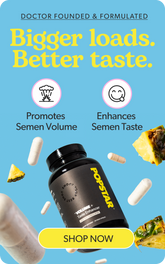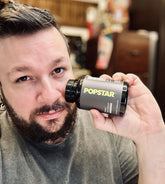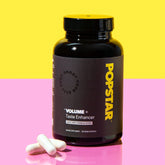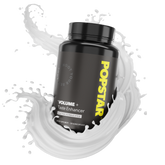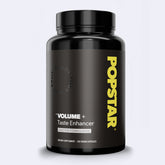"Spunk" is a colloquial term often used to refer to semen. Despite its informal tone, understanding spunk is crucial for men’s reproductive health and overall wellness. In this article, we’ll delve into the nature, composition, and role of spunk in men’s health, factors that affect its quality, and common questions people ask about this important bodily fluid.
Table of Contents
- Definition of Spunk
- Composition of Spunk
- Function of Spunk in Men’s Health
- Factors Affecting Spunk Quality
- Lifestyle Impact on Spunk
- Common Myths & Misconceptions
- Frequently Asked Questions
- Conclusion
- References
Definition of Spunk
Men’s health conversations frequently center around reproductive function, fertility, and sexual performance. The term “spunk” refers to semen—a bodily fluid that contains sperm cells as well as various nutrients and enzymes. It is produced primarily by the male reproductive organs and expelled during the process of ejaculation.
Semen, or spunk, is typically a whitish-gray fluid. Its consistency and appearance can vary slightly from one individual to another, and even within the same individual depending on factors like hydration, diet, and overall health. While often discussed in casual contexts, spunk holds significant biological and reproductive importance.
From an evolutionary standpoint, semen is the medium that carries sperm cells, which are essential for fertilizing a female’s egg during reproduction. Beyond this fundamental role, spunk has also been studied for its components and potential health implications—making knowledge about it a crucial part of men’s general health awareness.
Composition of Spunk
Although it may appear as a single uniform substance, spunk is a complex fluid that includes multiple components. Understanding its composition can shed light on its role in reproduction and overall male health. Below are some of its key constituents:
- Sperm Cells: These are the reproductive cells that carry the genetic material necessary for fertilization. Produced in the testes, sperm cells account for only a small percentage of total semen volume.
- Seminal Plasma: This fluid makes up the bulk of spunk and is generated largely by the seminal vesicles and prostate gland. Seminal plasma supplies nutrients, buffers, and a balanced pH environment for sperm to survive and remain motile.
- Enzymes and Proteins: Specific enzymes help liquefy semen after ejaculation, aiding sperm in traveling through the female reproductive tract. Various proteins contribute to semen’s viscosity and protective qualities.
- Nutrients: Semen includes fructose, citrate, and other sugars that supply energy to sperm cells. Trace minerals such as zinc, calcium, and magnesium also help maintain sperm health and viability.
- Hormones: Small amounts of hormones like testosterone can be present in semen, influencing its consistency and other characteristics.
Each part of spunk works in tandem to promote successful fertilization. Seminal plasma not only provides energy and nourishment but also offers a protective environment that keeps sperm viable until it reaches the egg. In men’s health conversations, understanding these components helps illuminate why certain dietary and lifestyle choices can affect the quality of spunk.
Moreover, shifts in the composition of semen can indicate underlying health issues. For instance, infections or inflammatory conditions can alter the pH or color, while hormonal imbalances might influence sperm count or motility. Hence, paying attention to changes in spunk’s composition can be an early indicator of potential health concerns.
Function of Spunk in Men’s Health
The primary function of spunk, from a biological perspective, is reproduction. However, its significance extends beyond enabling sperm cells to fertilize the egg. Consider the following roles and health implications:
- Reproductive Role: Spunk is the carrier for sperm, making it central to male fertility. Without quality seminal fluid, the likelihood of effective fertilization decreases.
- Indicator of Health: The quality, volume, color, and consistency of spunk can act as barometers for overall health. Changes in appearance or unusual symptoms may point to infections, nutritional deficiencies, or hormonal imbalances.
- Hormonal Insights: Although semen production is not solely determined by hormones, proper endocrine function (e.g., adequate testosterone levels) is crucial for maintaining healthy sperm count and motility.
- Prostate and Seminal Vesicle Function: The production and release of seminal fluid involve the prostate gland and seminal vesicles. Any issues with these glands, such as prostatitis or benign prostatic hyperplasia, may alter the quality or volume of spunk.
Men who experience difficulties with fertility often undergo a semen analysis, which evaluates aspects like sperm count, motility, and morphology. This information helps healthcare providers diagnose reproductive disorders and propose appropriate interventions, such as lifestyle changes, medication, or assisted reproductive technologies.
Factors Affecting Spunk Quality
The fluid’s capacity to help sperm survive and remain mobile depends on its overall quality and composition. Several variables can influence spunk’s quality, including:
- Age: Men produce motile sperm throughout life, but sperm quality, semen volume, and fertility potential may decline with age. This is partly due to decreases in testosterone production and potential accumulative damage to cells over time.
- Hormonal Balance: Testosterone, luteinizing hormone (LH), follicle-stimulating hormone (FSH), and other hormones play roles in sperm production. Any disruption in hormone levels can negatively impact sperm count and sperm health.
- Genetics: Genetic disorders affecting chromosomal integrity or testicular function can reduce sperm quality. These underlying factors often require specialized medical evaluations and interventions.
- Nutritional Intake: Nutrients like zinc, selenium, vitamin C, and vitamin E are important for healthy sperm development. Deficiencies in certain vitamins or minerals may diminish semen parameters.
- Infections: Sexually transmitted infections (e.g., gonorrhea, chlamydia) or other infections of the reproductive tract can lead to inflammatory responses that damage sperm. Early detection and treatment are crucial for restoring semen quality.
- Medications and Substances: Certain drugs, including chemotherapy agents, anabolic steroids, and recreational substances, can reduce sperm production or affect their morphology. If you’re concerned about specific medications, consulting a healthcare provider is essential.
- Environmental Exposures: Chemicals like pesticides, heavy metals, or other toxins may hamper sperm production and increase the risk of abnormal morphology. Occupational hazards and prolonged exposure to high temperatures (e.g., hot tubs, saunas) can also play a role.
Men who are interested in preserving or improving spunk quality should consider addressing these factors. Regular check-ups with a healthcare provider, alongside mindful lifestyle changes, can help optimize reproductive health.
Lifestyle Impact on Spunk
For men aiming to maintain or improve the quality of their spunk, certain lifestyle modifications can have a positive effect. While some of these measures are part of general health recommendations, they are particularly beneficial for reproductive well-being:
- Nutrition: A balanced diet rich in fruits, vegetables, whole grains, lean proteins, and healthy fats provides the essential micronutrients for sperm production. Foods high in antioxidants can help combat oxidative stress, which can damage sperm cells.
- Exercise: Engaging in moderate physical activity—such as brisk walking, running, or resistance training—can help maintain a healthy hormonal balance. However, overtraining or strenuous exercise may lead to stress on the body, affecting hormone levels.
- Weight Management: Obesity or being significantly underweight can alter hormone levels and impair sperm production. Maintaining a healthy weight through diet and exercise is often recommended for optimal reproductive health.
- Avoiding Harmful Substances: Smoking, excessive alcohol consumption, and using illicit drugs can significantly reduce sperm count and motility. Cutting back or abstaining entirely can improve semen parameters over time.
- Stress Reduction: Chronic stress can lead to hormonal imbalances that negatively affect sperm production. Techniques like meditation, yoga, or therapy may help in managing everyday stressors.
- Quality Sleep: Insufficient or low-quality sleep can disrupt testosterone levels and, consequently, affect sperm quality. Aim for adequate, consistent rest to support hormonal balance.
- Heat Exposure: Sperm production can be impacted by excessive heat, so limiting the use of hot tubs and saunas or wearing looser clothing may be beneficial.
These lifestyle factors do not guarantee a complete resolution of fertility issues or underlying health concerns, but they can certainly optimize one’s chances of maintaining high-quality spunk. It’s recommended to consult with a healthcare professional for personalized advice, especially if you’re having persistent fertility challenges or other unusual symptoms.
Common Myths & Misconceptions
Misinformation about spunk abounds due to cultural taboos and urban legends. Here are some widespread myths clarified:
- Myth 1: Spunk Quantity Directly Correlates with Fertility. While volume can be a factor, it’s not the sole indicator of fertility. Sperm concentration, motility, and morphology are more critical.
- Myth 2: Color Changes Always Mean Serious Trouble. Semen can vary in shade for benign reasons, like diet or hydration. However, persistent atypical colors (yellow, green, or red) warrant medical evaluation.
- Myth 3: Frequent Ejaculation Depletes Sperm Resources Permanently. While frequent ejaculation can temporarily reduce sperm count, the body continually produces sperm. Counts typically recover with a brief period of abstinence.
- Myth 4: Only Older Men Experience Declines in Semen Quality. Age can influence sperm parameters, but other factors—diet, substance use, and environmental toxins—can affect men of any age.
- Myth 5: Spunk Has No Nutritional Value to Sperm Cells. Seminal fluid contains vital nutrients like fructose that keep sperm energized. These nutrients improve sperm survival until they can potentially fertilize an egg.
By dispelling these myths, men gain a more accurate understanding of their reproductive health and can focus on evidence-based practices for maintaining or improving semen quality.
Frequently Asked Questions
What is “spunk” in medical terms?
Medically, “spunk” is a colloquial term for semen. Semen is the milky fluid that carries sperm out of the body during ejaculation. It comprises sperm cells, nutrients, enzymes, and fluid from glands like the prostate and seminal vesicles.
Can the color of spunk vary, and what does it mean?
Yes, the color of semen can appear translucent white or grayish, and it can vary because of diet, hydration levels, or other factors. Slight yellowish tints are sometimes normal, especially if a man hasn’t ejaculated in a while. However, pronounced discoloration, particularly red (indicating blood) or green (possible infection), should prompt a medical evaluation.
Does the volume of spunk determine fertility?
Not necessarily. While volume is monitored in a semen analysis, fertility is more accurately determined by sperm count, morphology (shape), and motility (movement). Having a large volume of ejaculate doesn’t always mean high-quality or abundant sperm.
Is there a normal smell for spunk?
Healthy semen is often described as having a mild, bleach-like or chlorinated odor due to alkaline pH levels. A strong or foul smell could indicate infection or other underlying conditions. If you notice a significant change in odor, it’s advisable to consult a healthcare professional.
How often is it healthy to ejaculate?
There’s no single correct frequency. Some studies suggest that regular ejaculation can be beneficial for prostate health, but this is still an area of active research. Frequency can vary based on personal preference, age, libido, and relationship status. As long as you feel physically and emotionally comfortable, there’s typically no cause for concern.
Can diet really influence the taste and smell of spunk?
Anecdotally, many people report changes in the taste and even the smell of semen after consuming certain foods like garlic, onions, asparagus, or pineapple. While systematic research on this topic is limited, it’s plausible that specific compounds from foods can be excreted in body fluids, including semen.
How can I improve spunk quality naturally?
Healthier lifestyle choices—like eating a balanced diet, maintaining a healthy weight, exercising regularly, and avoiding smoking or excessive alcohol—can all contribute to improved semen quality. Including antioxidant-rich foods and staying well-hydrated may be especially helpful.
Why does spunk sometimes appear thicker or thinner than usual?
Changes in consistency can be attributed to factors like hydration, recent ejaculation frequency, and certain infections. If the thickness or thinness is consistent over time or accompanied by pain or other symptoms, seeking medical advice is recommended.
Can an infection change the color or smell of spunk?
Yes, sexually transmitted infections (STIs) or urinary tract infections can cause discoloration (yellow, green, or bloody) and alter the normal odor of semen. Persistent changes should be assessed by a healthcare provider for prompt diagnosis and treatment.
Are there vitamins or supplements that help with spunk quality?
Supplements containing antioxidants like vitamin C, vitamin E, and zinc are sometimes recommended to support sperm health. However, these should not replace a nutritious diet. It’s best to discuss any supplementation plan with a healthcare professional.
What role does stress play in semen quality?
Chronic stress can elevate cortisol levels, which may interfere with testosterone production and sperm formation. Incorporating stress-reduction practices such as meditation, exercise, or therapy can be beneficial for both mental wellness and reproductive health.
When should I seek medical help for spunk-related concerns?
If you notice persistent changes in color, volume, or odor, along with additional symptoms like pain, itching, or difficulty urinating, it’s advisable to consult a healthcare provider. Additionally, men who have been actively trying to conceive for a year or more without success may benefit from a semen analysis to identify potential fertility problems.
How do doctors assess spunk quality?
Medical professionals typically use a semen analysis to examine volume, sperm concentration, motility, and morphology. Additional tests might include hormones (testosterone, FSH, LH) and evaluations for infection. This comprehensive approach helps identify specific issues affecting semen quality.
Can spunk production be permanently damaged?
Severe injuries to the testicles, untreated infections, or certain genetic disorders can result in long-term damage to sperm production. However, many factors that reduce semen quality—such as substance abuse or poor lifestyle habits—can be mitigated or reversed over time when addressed appropriately.
Conclusion
Spunk, as informal a term as it may be, plays an essential role in men’s health and fertility. From its composition of sperm cells, enzymes, and nutrients to the lifestyle factors that can boost or diminish its quality, an understanding of semen is vital for any man looking to optimize his reproductive health. The appearance, color, volume, and even smell of spunk can yield valuable insights into one’s well-being, occasionally signaling potential health issues in advance. Paying attention to your body’s signals—a subtle color change or a slight shift in consistency—can prompt timely medical intervention and ensure any underlying cause is treated early.
Maintaining a balanced diet, exercising regularly, reducing stress, and avoiding harmful substances can have tangible positive effects on semen quality. If you’re trying to conceive or simply want to ensure that your reproductive system is in good shape, periodic consultations with healthcare professionals can provide personalized guidelines and, when needed, medical interventions. Ultimately, understanding spunk is not just about fertility; it’s about acknowledging a key component of men’s wellness and taking proactive steps to support overall health.
References
- National Institutes of Health – Male Reproductive Health:
https://www.ncbi.nlm.nih.gov - World Health Organization – Semen Analysis Guidelines:
https://www.who.int - Johns Hopkins Medicine – Male Fertility:
https://www.hopkinsmedicine.org - Mayo Clinic – Semen Analysis:
https://www.mayoclinic.org






